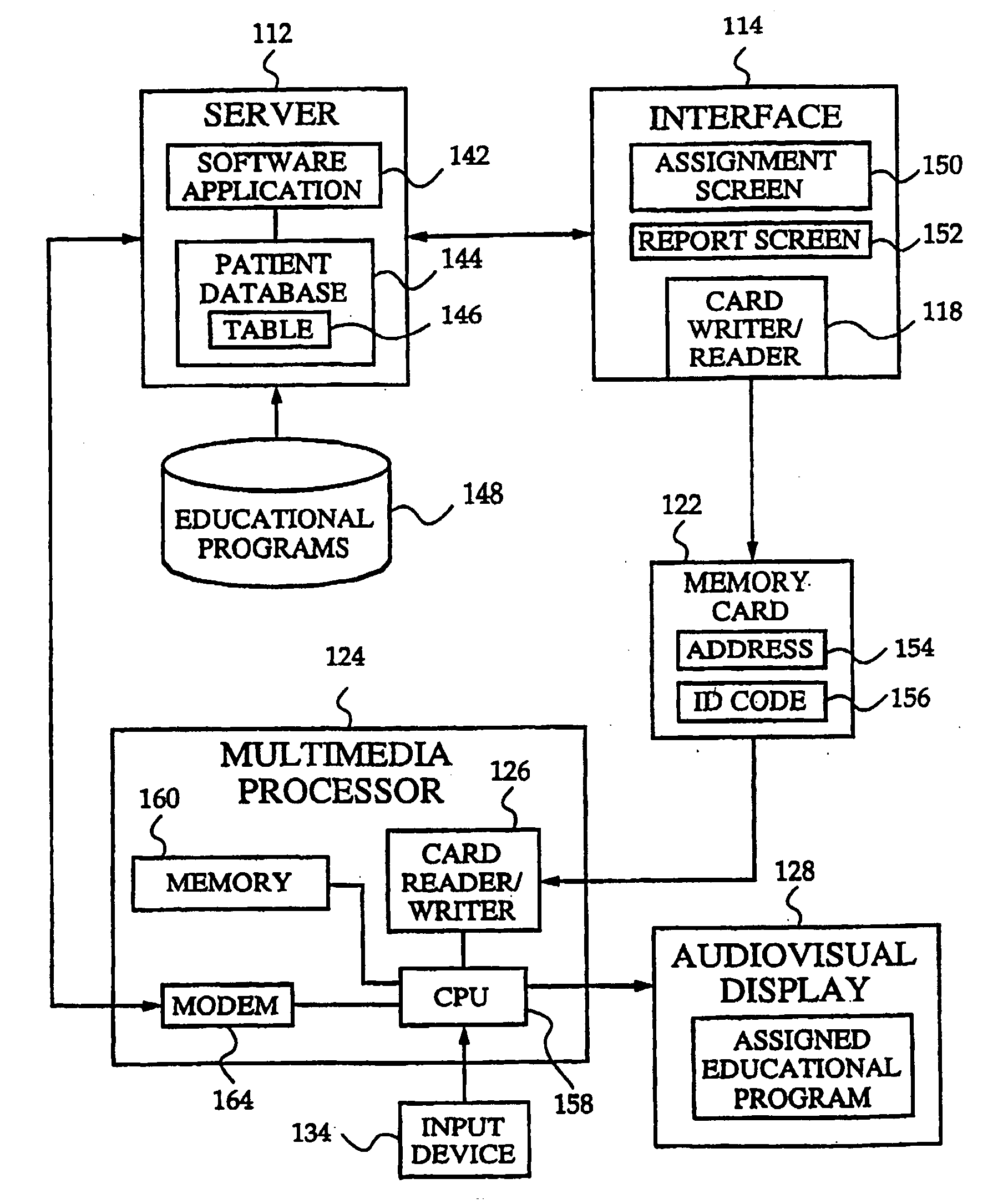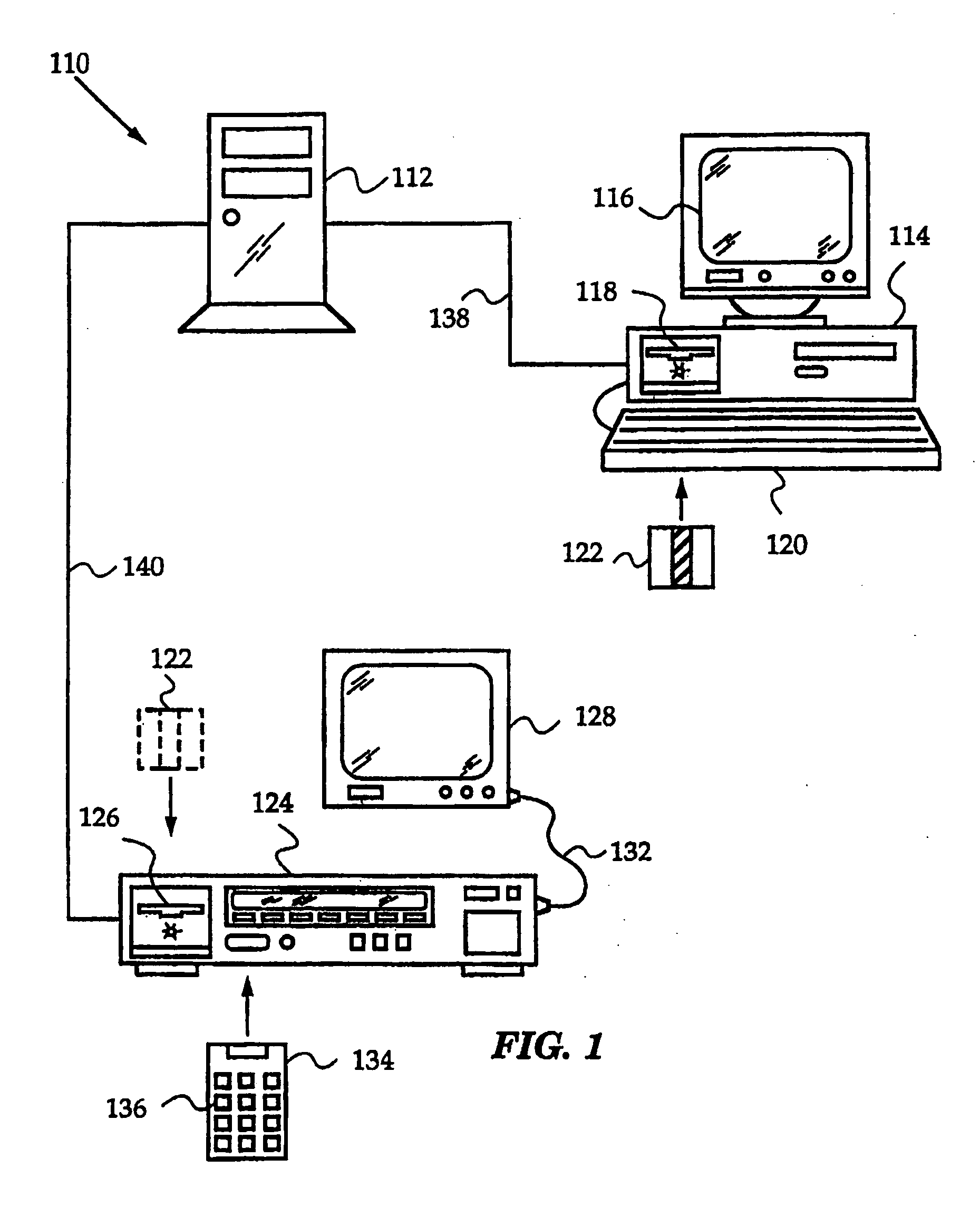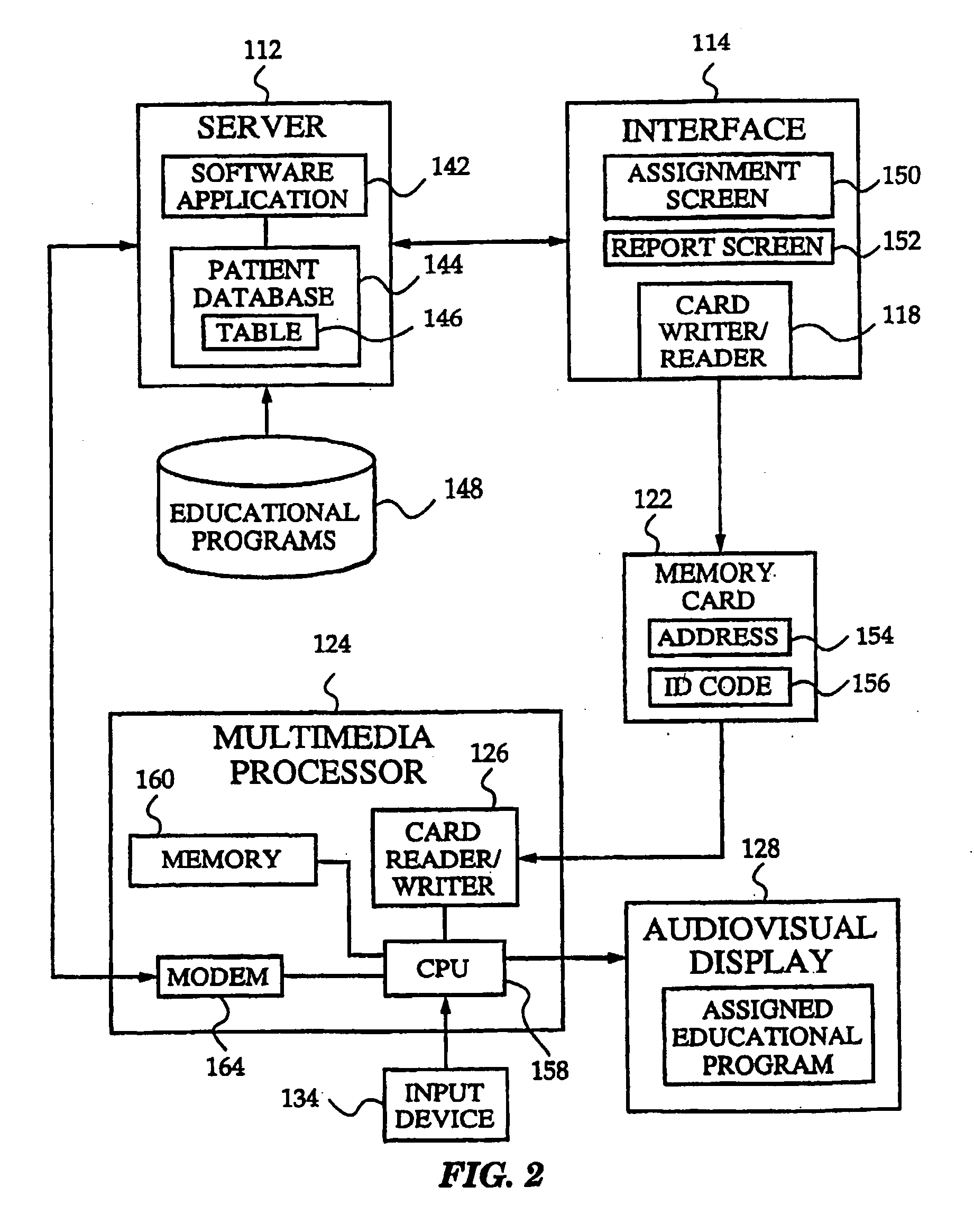System and method for monitoring a physiological condition
a physiological condition and system technology, applied in the field of remote health education, can solve the problems of patients' lack of knowledge of basic preventive measures, patients' lack of knowledge of conditions or diseases they do, and many healthcare providers face the lack of knowledge of patients
- Summary
- Abstract
- Description
- Claims
- Application Information
AI Technical Summary
Benefits of technology
Problems solved by technology
Method used
Image
Examples
Embodiment Construction
[0043] The present invention provides a system and method for remotely educating an individual using a memory card. In the preferred embodiment, the invention is used to distribute custom-designed health education programs to patients. However, it is to be understood that the invention is not limited to the healthcare industry. The system and method of the invention may be used for any type of remote education application in any field.
[0044] The preferred embodiment of the system is shown in FIG. 1. The system 110 comprises a file server 112, which is connected by communication links 138, 130, and 140 to a remote interface 114, a database 148 containing educational programs, and a multimedia processor 124. File server 112 is preferably a world wide web server, remote interface 114 is preferably a web page, and communication links 138 and 130 are preferably the Internet. Remote interface 114 has a display 116 and a keyboard 120, which an administrator can use to assign an educationa...
PUM
 Login to View More
Login to View More Abstract
Description
Claims
Application Information
 Login to View More
Login to View More - R&D
- Intellectual Property
- Life Sciences
- Materials
- Tech Scout
- Unparalleled Data Quality
- Higher Quality Content
- 60% Fewer Hallucinations
Browse by: Latest US Patents, China's latest patents, Technical Efficacy Thesaurus, Application Domain, Technology Topic, Popular Technical Reports.
© 2025 PatSnap. All rights reserved.Legal|Privacy policy|Modern Slavery Act Transparency Statement|Sitemap|About US| Contact US: help@patsnap.com



